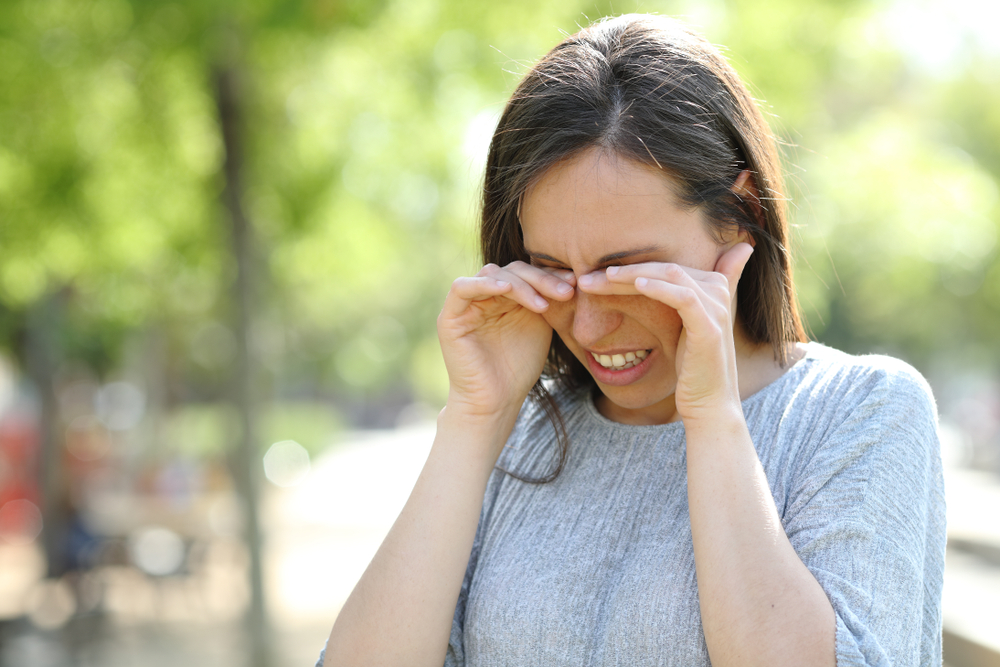
The CDC estimates that more than 40 million Americans wear contact lenses. People with refractive errors prefer contact lenses because they are convenient and correct vision without changing their appearance. Usually, people can barely feel they are wearing them.
Contact Lens-induced Dry Eyes
The cornea is unique since it draws oxygen directly from the air. Some contacts can prevent sufficient oxygen from reaching the eye, resulting in an itchy, dry feeling. Most modern contacts let oxygen through, but wearing them for prolonged periods can still be an issue. Also, contact lenses can absorb tears that moisten the eye, causing eye dryness.
In either case, eye care professionals refer to the condition as contact lens-induced dry eye. Those already prone to dry eye issues are more likely to experience the condition. Furthermore, improperly fitted lenses can further exacerbate the problem.
Symptoms of Contact Lens-induced Dry Eyes
Symptoms of the condition can range in severity but often start mild. These include:
- Red eyes.
- Sore, dry, or itchy eyes.
- Blurry vision.
- Eye fatigue.
- Stringy eyes.
- Eye soreness.
- Sensitivity to light.
Treatment
Fortunately, you have several treatments available to deal with contact lens-induced dry eyes. Some of these include:
- Lubricating Eye Drops: A simple way to add more moisture to your eyes is through eye drops. Look for eye drops you can safely apply with contact lenses in your eyes. Your eye doctor may recommend the appropriate eye drops if OTC drops are not doing the trick.
- Daily Disposable Contact Lenses: Daily disposables are an excellent option if you have issues with the eye condition. That is because there is no risk of the lens drying up or buildup on the lens over time. Single-use contacts are maintenance-free, eliminating the risk of improper maintenance that can lead to a dryness issue.
- Eye Vitamins: Some orally taken vitamins can help improve eye health and make contact lenses more comfortable to wear.
- Scleral Lenses: These contact lenses are larger than regular ones and fully cover the entire corneal surface, ensuring they do not dry out. They have a liquid reservoir between the cornea and lens to ensure a moist environment for the eye. That helps provide relief for people who experience dry eyes.
- Low-water Contact Lenses: It might seem somewhat counterintuitive, but low-water contacts can keep your eyes moist more than high-water contacts. That is because the latter can draw water from the tear ducts over time, leading to dry eyes.
- Orthokeratology: With this innovative treatment, you wear contacts only while asleep. These gas-permeable lenses reshape your cornea while you sleep and temporarily correct your refractive issues. So, you do not have to wear contact lenses during the day, eliminating the risk of contact lens-related dry eye.
- Silicone Hydrogel Contact Lenses: These are innovative lenses made of a new material that is significantly more breathable than standard lenses. That allows users to wear them for more extended periods with increased comfort and less likelihood of dryness.
Contact lenses can cause dry eye symptoms if not used properly. That is especially so for those who are already prone to dry eyes. Dry eye is a common problem experienced by many contact lens wearers. While people who do not wear contacts can experience dry eyes too, the symptoms tend to be more irritating, severe, and noticeable for those who wear contact lenses.
For more on contact lenses, visit Westchester Eye Care Center at our office in Los Angeles, California. Call (310) 670-1888 to book an appointment today.








